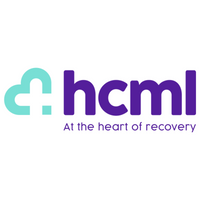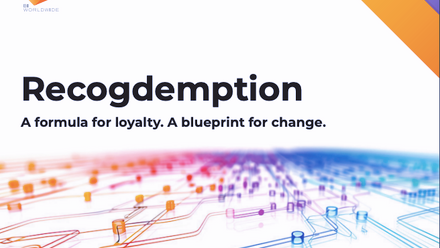Top tips to connect reward, benefits and recognition
The way organisations approach reward and recognition has changed dramatically over the past decade. Once dominated by salary packages and traditional bonus structures, today’s strategies are broader, more nuanced, and increasingly focused on the whole employee experience.
For HR directors, the challenge is no longer simply to offer competitive pay and more geared towards designing a reward and recognition framework that connects pay, benefits, and recognition.
What organisations need is one cohesive strategy that motivates employees, supports wellbeing, and ultimately drives organisational performance.
At the heart of this, the HR strategy, of which reward plays a significant part, has to align to the organisation’s strategic goals and core values and that is the best place to start when connecting reward, benefits and recognition.
Link between health, happiness and performance
Healthy employees are happier employees. When individuals feel physically, mentally and emotionally well, they bring more energy, focus and creativity to their roles. They are more resilient under pressure, more motivated to perform, and more likely to remain loyal to the organisation that invests in their wellbeing.
Conversely, poor health, whether due to stress, mental ill-health, chronic conditions or lifestyle factors, has a profound impact on productivity, engagement and absence rates. Employers who fail to address wellbeing risk higher turnover, rising costs and a disengaged workforce.
By placing health and wellbeing benefits at the top of the reward and recognition agenda, HR leaders send a clear message that they value their team members not just as employees, but as people. That message builds loyalty and trust, and it pays dividends in performance.
Why benefits must be relevant
One of the most common pitfalls in reward strategy is adopting a one-size-fits-all approach. The workforce is more diverse than ever, with employees at different life stages, living different lifestyles, and managing different priorities.
A twenty-something graduate might be motivated by fitness memberships, lifestyle perks or student loan support. Parents may prioritise flexible working and healthcare cover for their families. Older employees may be more concerned about pensions, retirement planning or private medical care.
If benefits are not relevant, they risk being under-utilised and seen as tokenistic. On the other hand, when benefits resonate with employees’ real needs, they create a powerful sense of being understood and valued. That relevance is what transforms a benefits package from an HR initiative into a driver of culture and engagement.
Connecting recognition with support
Recognition is a vital part of any reward strategy. Timely, personalised acknowledgement of a job well done reinforces behaviours, builds morale, and motivates employees to keep performing at their best.
But recognition cannot exist in a vacuum. If employees are praised on one hand but unsupported in their day-to-day challenges, recognition risks feeling hollow. The most impactful recognition strategies are those backed by tangible benefits that demonstrate the organisation’s commitment to employee wellbeing.
For example, publicly recognising a team’s extraordinary efforts during a high-pressure period is powerful. Pairing that recognition with access to additional wellbeing support, makes the recognition feel authentic and lasting. It transforms a gesture into genuine investment in people.
Embedding wellbeing into organisational culture
A holistic reward and recognition strategy does more than provide benefits. It embeds wellbeing into the culture of the organisation. This means shifting from reactive support to proactive investment.
Rather than waiting for employees to burn out or disengage, HR leaders can design frameworks that help prevent problems from occurring in the first place and builds resilience.
Examples include:
- Mental health support: Access to counselling, digital therapies or resilience programmes.
- Physical health initiatives: From healthcare cover to fitness subsidies and preventative screenings.
- Work-life balance measures: Flexible working arrangements, enhanced leave policies and support for carers.
- Financial wellbeing support: From pensions and retirement planning to financial education and debt support.
When these benefits are positioned not as extras, but as core pillars of reward and recognition, they shape an environment where employees feel cared for, supported and able to thrive.
The role of data and feedback
A holistic approach is not static and must evolve as the workforce does. Regularly reviewing benefits uptake and impact is essential. Employee surveys, focus groups and usage data can provide powerful insights into what employees value most, and where there are gaps.
For HR directors, data-driven decision making ensures benefits remain relevant and cost-effective, offering wellbeing benefits with tangible outcomes such as reduced absence, higher engagement scores and improved retention.
Managers as catalysts of recognition
Managers play a critical role in embedding recognition and making benefits meaningful. They are the link between HR strategy and the day-to-day employee experience.
Training managers to deliver timely, authentic recognition and to signpost employees to relevant benefits helps ensure the holistic approach is lived out across the organisation.
It’s also about ensuring leadership practice what they preach, leading by example to make sure they too take time out when needed and use the initiatives in place to protect their health and wellbeing.
Bringing it all together
The future of reward and recognition lies in integration. Salary, benefits and recognition should no longer be treated as separate initiatives. Instead, they should be connected into a single, holistic strategy that prioritises health and wellbeing as the foundation of performance and loyalty.
For HR directors, this means designing benefits that are relevant and diverse and using data and feedback to evolve strategies in line with workforce needs. It means listening to the feedback and embedding wellbeing into culture rather than treating it as an add-on.
Supplied by REBA Associate Member, HCML
HCML is a health and wellbeing provider, offering integrated and personalised healthcare solutions.








